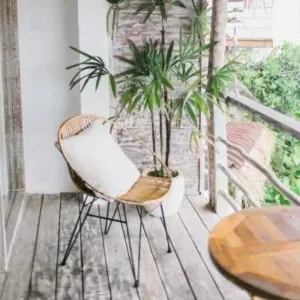Does composite decking fade – the natural process of weathering
Composite decking has become very popular for its durability and ability to closely mimic natural wood, while the material used to make wood-plastic composite decking can be more weather-and fade-resistant than natural wood boards. Even so, “fading” tends to one of the most common search terms associated with composite decking as this is one of the most common questions asked of decking installers.
Does composite decking fade? The reality is that all decking is prone to fading over time. In fact, a common red flag to watch out for with cheap decking is the promise of no fade or wear. To aid you in your research, this article lists the most common types of decking and the lifespan and level of fade you can expect from each.
First-generation boards
Uncapped decking boards were some of the first WPC composite boards on the market. Still being manufactured today, these are made from wood and recycled plastic fibres. These boards will go through several stages of fading after being installed. This process, which usually lasts 3-6 months, is natural and is mainly due to the boards’ surface which is composed of 60% recycled wood. Boards made of any percentage of timber will be prone to fading over time.

Stages of weathering of composite decking boards
The first stage any uncapped decking board will go through is called extractive bleeding. During this stage, the natural oils and tannins contained in the timbre fibres comprising up to 60% of wood-plastic composite boards get washed away by rain and moisture in the air. This stage usually lasts between six and eight weeks. It does not harm your composite decking boards. In fact, the fading may be so subtle at this stage that you don’t even notice. However, lighter boards will undergo more significant fading due to the higher concentration of oils contained within the timber.
In the second stage of weathering, most of the fading will be caused by the sun’s UV rays. High-quality decking boards should incorporate a UV light filter to minimise the impact of this stage. It is best to ask about the UV filter prior to purchasing WPC decking boards, especially as you consider your price range. This can be predicted to an extent, based on the quality of the wood component used in the decking boards. The best way to gauge the degree of wear after installing the boards is to wait 6 months for the impact to kick in and then compare the colour of your boards with a sample of the same model and make. This will provide a true reflection of the level of fade and the colour your composite decking should maintain for the rest of its lifespan.
Generally, after three to six months, the colour of composite decking will stabilise. Again, keep in mind that this will be a lighter shade than you originally selected, so it is good to bear this in mind when deciding on the colour of your boards. Despite this natural fade, WPC decking remains the low-maintenance choice, in comparison to wood, as well as a more attractive option than plastic decking.
Which WPC boards fade the least?
Different types of composite decking at different rates. For example, WPC boards without plastic skin will lighten to a higher degree due to more direct exposure to the sun.
Additionally, boards in the higher price ranges will typically have the aforementioned UV filter. It may be worth paying a premium for this, especially if you are planning to install your boards in an outdoor space that tends to get a lot of sunlight.
The most noticeable change will be in premium boards which use two or more shades to mimic natural wood grain. Over time, depending on the quality of the boards, the contrast between the different shades may reduce, resulting in a change in appearance.
In decking boards with a deeper wood-grain, however, fading overtime may be less obvious. If the appearance of your boards is very important to you, these are all important questions to ask before purchasing composite decking.
The low-maintenance decking option
While any composite decking is likely to fade over time, this changes in colour is insignificant to the weathering of the traditional timber boards usually undergoes. In addition, WPC tends to be the low-maintenance decking option, as it does not need to be lacquered or stained ever and will largely hold its colour over time.
However, if the exact colour is an important aspect to you, it is important to check the expected degree of fading of your chosen boards and select an option with a WPC or recycled plastic skin, as well as a UV filter.
If you choose carefully and with consideration of the climate and environmental factors in your area, e.g. sunlight, wind and precipitation, your composite decking can go on to serve you for decades to come.
